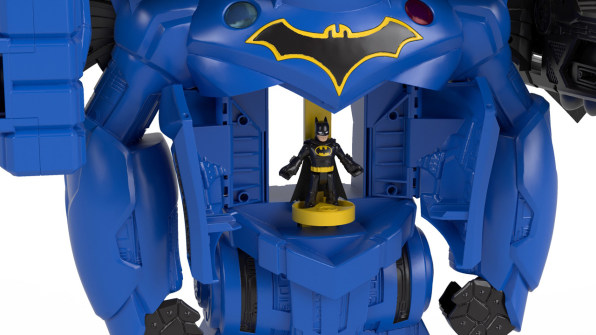Fisher Price Nursery Design Tool
Fisher-Price calls it the Batbot Xtreme. A towering 28 inches of crime-fighting hyperbole, the Batbot is a Batcave on legs, complete with tracheal elevator, the pop-out wingspan of an Airbus, giant jackhammer pneumatic fists, and a vocal changer to turn a four-year-old's voice into a superhero's.
The Batbot Xtreme wasn't always this . . . Xtreme. At first, it was just a six-inch toy. But with the help of new VR techniques, Fisher-Price's designers were able to change the scale of the toy, test it, and bring it to market fast. They were also able to put themselves in their users' (pint-sized) shoes.
Originally, Fisher-Price had planned another flagship product to lead its 2017 line of action Imaginext toys. But it was scrapped in the 11th hour, leaving the team without a big, deluxe item–the sort of inspiring uber-toy that would get a kid hooked on a whole line.
"We had to, as we say, in toy design, go back to the drawing board," says Tyler Berkheiser, Imaginext design director. "And we had this six-inch Batbot figure that, ironically, everybody loved but said, 'It would be cool if it were bigger.'"
Of course, it's not impossible to make a toy bigger. Fisher-Price models toys in CAD, and these 3D models can be easily scaled. But the fun of a toy is its tangibility. And so toy manufactures have long relied on sculptures, model shops, and, more recently, 3D printers to quickly mock up and troubleshoot designs before they're mass-manufactured. But these processes take time. Even a 3D print of something as large as the Batbot could take a week.
"When you get that physical toy from the screen for the first time, there's a state change. We need to get across that barrier as quickly as possible," says Berkheiser. "We quickly realized we don't have time to build this model. How could we realize if this works?"
The solution was born from John Krisman, R&D technical lead at Fisher-Price. Originally, he'd been brought in to help the animation team, which spins off Fisher-Price toys into their own cartoon-style digital content. But Krisman also plays a lot with augmented reality and virtual reality, and had been experimenting with how these tools might actually not just create content, but inform the toy design process.
Krisman was able to take the CAD model for the Batbot, and bring it into VR through the Unity engine–the same engine behind many video games. Designers could wear a VR headset, and actually see the Batbot at various scales. Importantly, because Unity has basic physics built in and can recognize how shapes twist and meet, designers could even play with parts of the toy, move its mechanical parts, and check basic tolerances early.
"The problem is, we learn at lot at the first model stage. 'This isn't right. The door is hitting this thing.' By going into the VR world, because of the detail our models have, we do have to have all that information. We can evaluate early," says Krisman. "If we're in a situation where every day counts, literally . . . you can make those changes right away. It truly is 100% accurate as to what the model would have been made as. It's literally the same geometry."

VR also helped the designers grasp something less tangible: how the toy might feel to a kid. "I'm [wearing VR], and John says, do you want to see what if feels like if you were four years old and standing there?" says Berkheiser. "It was like, bam, so cool. I got to place my hands where the kid did to make the activations work. As a toy designer, I'm really into what I do, but I'm still desperately trying to get back to my five-year-old self. To be able to actually feel like that and be standing behind the toy like they would be? It was a pretty magical moment. And I hadn't felt like looking at a toy like that before VR."
With Batbot, VR shaved a tough-to-quantify amount of time off the development process, the designers say. From there, the team still went through its normal toy development process.
Berkheiser thinks VR is good enough to cut out much of the early model-making process altogether. "I might feel comfortable moving all the way to first plastic even looking at something virtual," he says. "In the past, I would have never dreamed that. And you know, if there's something simple and it's not a complex product, I could see going all the way down the line [into production]."
The Batbot Xtreme is available for preorder on Amazon for $110. It will be out in stores this fall.
Fisher Price Nursery Design Tool
Source: https://www.fastcompany.com/3068278/how-fisher-price-toy-designers-channel-their-inner-4-year-old
Posted by: ogrentherong.blogspot.com

0 Response to "Fisher Price Nursery Design Tool"
Post a Comment